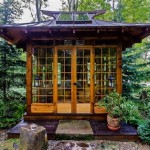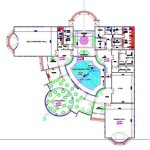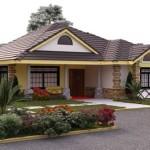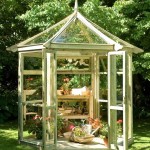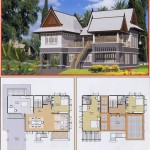Essential Aspects of Traditional Japanese House Design Floor Plan
Traditional Japanese houses exhibit a unique blend of simplicity, functionality, and aesthetics. The floor plan of these homes is central to achieving this balance, featuring distinct elements that have evolved over centuries.
Genkan (Entrance): The genkan is the transition space between the outside and the interior of the house. It features a raised floor, where shoes are removed before entering the living areas. The sunken floor signifies the change in elevation and symbolizes entering a sacred space.
Washitsu (Japanese-Style Room): The washitsu is the heart of the traditional Japanese home. It is a versatile space that serves as a living room, dining room, and occasionally even a bedroom. The room is characterized by tatami mats, sliding paper screens (shoji), and a tokonoma (alcove) for displaying art or flowers.
Shoji Screens: Shoji screens are translucent paper screens that separate rooms or create partitions within a space. They allow natural light to filter through while providing privacy and flexibility in the layout.
Fusuma Doors: Fusuma doors are opaque paper screens that slide open or closed to separate or connect rooms. They feature traditional Japanese designs or patterns and provide a decorative element to the interior.
Tokonoma: The tokonoma is a raised alcove in the washitsu. It serves as a focal point and is used for displaying artwork, calligraphy, or flower arrangements. The arrangement of items in the tokonoma reflects the season and the homeowner's aesthetic preferences.
Engawa: The engawa is a covered porch that runs along the outside of the house. It provides a semi-outdoor space where residents can enjoy fresh air and views of the garden.
Niwa (Garden): The niwa is an integral part of the traditional Japanese house. It is designed to bring nature into the home and create a sense of tranquility. The garden may feature a pond, stones, lanterns, and carefully pruned trees.
In addition to these essential elements, traditional Japanese house floor plans also emphasize the following principles:
- Harmony with Nature: The design incorporates natural materials like wood, paper, and stone. The garden is seen as an extension of the living space.
- Flexibility: The use of shoji screens and fusuma doors allows for easy reconfiguration of spaces, adapting to different needs and activities.
- Simplicity and Minimalism: Traditional Japanese houses embrace a minimalist aesthetic, with clean lines, uncluttered spaces, and a focus on essential elements.
The floor plan of a traditional Japanese house is not merely a blueprint but a reflection of its cultural heritage and philosophy. It embodies the principles of harmony, nature, flexibility, and minimalism, creating a living environment that is both functional and aesthetically pleasing.

Traditional Japanese House Floor Plan Google Search Casas Japonesas Casa Tradicional Japonesa

Traditional Japanese Home Floor Plan Cool House Plans Ideas Des Architecture Style

Traditional Japanese House Plan Style Plans

Japanese Home Design Ideas Pictures 331 Sqm Homestyler

The Layout Of Ground And First Floor A Traditional Japanese House Scientific Diagram

Japanese Home Design Ideas Pictures 331 Sqm Homestyler

180 Best Japanese House Plans Ideas Traditional

Traditional Japanese House Style Plans
What Do The Blueprints Of A 1 Floor Traditional Japanese House Look Like Quora

Nice Traditional Japanese House Floor Plan Minimalist Home Design

